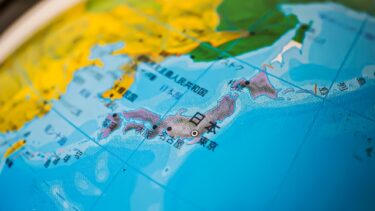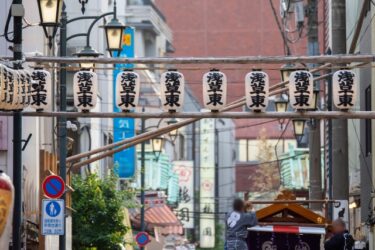Japan, an island nation rich in history and culture, has a unique population shaped by centuries of migration and blending with different Asian regions. Although Japan is often seen as a culturally homogeneous country, its people’s ancestry tells a story of diverse origins, which include influences from both Northern and Southern Asia. This blend of ancestry is evident in Japan’s range of physical characteristics, cultural practices, and traditions.
The Characteristics of Japanese People from Ancient Times
Northern Influence: Jomon and Yayoi
The earliest settlers of Japan are traced back to the Jomon people, who are believed to have arrived around 14,000 years ago. The Jomon are considered to have originated from northern Asia, with some anthropologists suggesting links to Siberian and northeastern Asian populations. The Jomon people are known for their distinctive pottery and hunter-gatherer lifestyle, and their genetic traits are thought to contribute to some physical characteristics found in modern Japanese people, such as higher cheekbones and deeper-set eyes.
Around 2,300 years ago, another group, known as the Yayoi people, began migrating to Japan. These migrants likely originated from areas around the Korean Peninsula and the Yangtze River basin in China. Unlike the Jomon, the Yayoi people practiced agriculture and brought new technologies, including rice farming and metalworking. The Yayoi migration significantly influenced Japanese society, bringing genetic diversity and laying the foundation for many aspects of Japanese culture and language.
Southern Influence: Austronesian and Southeast Asian Migration
In addition to northern influences, some theories suggest that populations from Southeast Asia and the Pacific islands also migrated to Japan, particularly to the southern regions, such as the Ryukyu Islands (modern-day Okinawa). Genetic studies indicate connections between the Japanese, particularly in these southern regions, and Austronesian-speaking peoples of Southeast Asia and the Pacific. This ancestry is thought to contribute to physical traits, such as slightly darker skin tones and rounded facial features, which are more commonly observed among individuals from Okinawa and other southern islands.
Unique Cultural and Physical Traits
The result of these migrations and interactions is a range of physical traits among the Japanese people. Though most Japanese have straight black or dark brown hair and brown eyes, there are variations, including lighter brown or even reddish hair shades. Similarly, skin tones vary from fair to slightly tanned, with some Japanese people being more prone to sunburn than others. This diversity of physical traits reflects the complex ancestral influences that have shaped Japan’s population.
Modern Genetic Studies
Modern genetic studies continue to shed light on the diverse ancestry of the Japanese people. These studies reveal that most Japanese people have a mix of both Jomon and Yayoi ancestry, with additional traces of southern Asian and Pacific influences. Today, this genetic diversity is celebrated as part of Japan’s cultural heritage, even as Japan remains a relatively unified society.
Since Japan Began Interacting with Foreign Countries
Edo Period Isolation and the Opening to the World
From the early 17th to mid-19th century, Japan implemented a policy of sakoku, or national isolation, under the Tokugawa Shogunate. This policy restricted foreign influence and limited international contact, primarily confining trade to Dutch and Chinese merchants through the port of Nagasaki. Despite this limited interaction, Japan still absorbed select Western knowledge and technology, particularly in fields like medicine, astronomy, and military technology, through Dutch intermediaries. These interactions contributed to Japan’s scientific and cultural knowledge base even while the nation remained largely closed.
Opening to Foreign Influence and Migration in the Meiji Era
In 1853, with the arrival of American Commodore Matthew Perry and his fleet, Japan was pressured to open its doors to international trade, marking the end of the isolationist sakoku policy. Japan subsequently entered into trade agreements with Western nations, prompting a period of rapid modernization and cultural exchange during the Meiji Era (1868–1912). This opening led to increased contact with various Western countries, and cities like Yokohama and Kobe became bustling centers with foreign residents, including diplomats, engineers, merchants, and educators.
Foreigners in Japan and the First Mixed Heritage Communities
During the late 19th and early 20th centuries, Japan saw a gradual rise in interracial marriages and mixed-heritage children, particularly in port cities with large foreign communities. For instance, Scottish merchant Thomas Glover played a notable role in Nagasaki’s development and contributed to Japan’s industrialization. Glover married a Japanese woman, and their children became some of the earliest recorded mixed-heritage individuals in Japan.
Japanese Emigration and Mixed Heritage Abroad
Around the same period, many Japanese people emigrated to Hawaii, the United States, and Brazil, where they intermarried with locals. Their descendants formed vibrant Japanese diaspora communities, contributing to the spread of Japanese culture abroad and creating mixed-heritage families. These communities, such as the Nikkei in Brazil and the Japanese Americans in the U.S., continue to thrive and maintain cultural ties with Japan.
Post-War Influence and Modern Multiculturalism
Following World War II, the American occupation of Japan brought a new wave of Western influence and led to an increase in Japanese-American mixed heritage families, particularly near American military bases. This period also saw Japan embracing multiculturalism and diversity, especially in urban areas, with foreign communities steadily growing. Today, Japan is home to many individuals with multicultural backgrounds, including those with Filipino, Chinese, Korean, and Brazilian heritage, adding to the fabric of modern Japanese society.
Conclusion
Through centuries of migration, international influence, and global connections, Japan has developed into a society with a rich and diverse genetic and cultural heritage. From ancient migrations to recent waves of international influence, the Japanese people embody a mosaic of historical and genetic influences, highlighting Japan’s unique balance of cultural preservation and openness to diversity.







